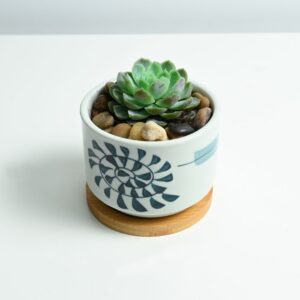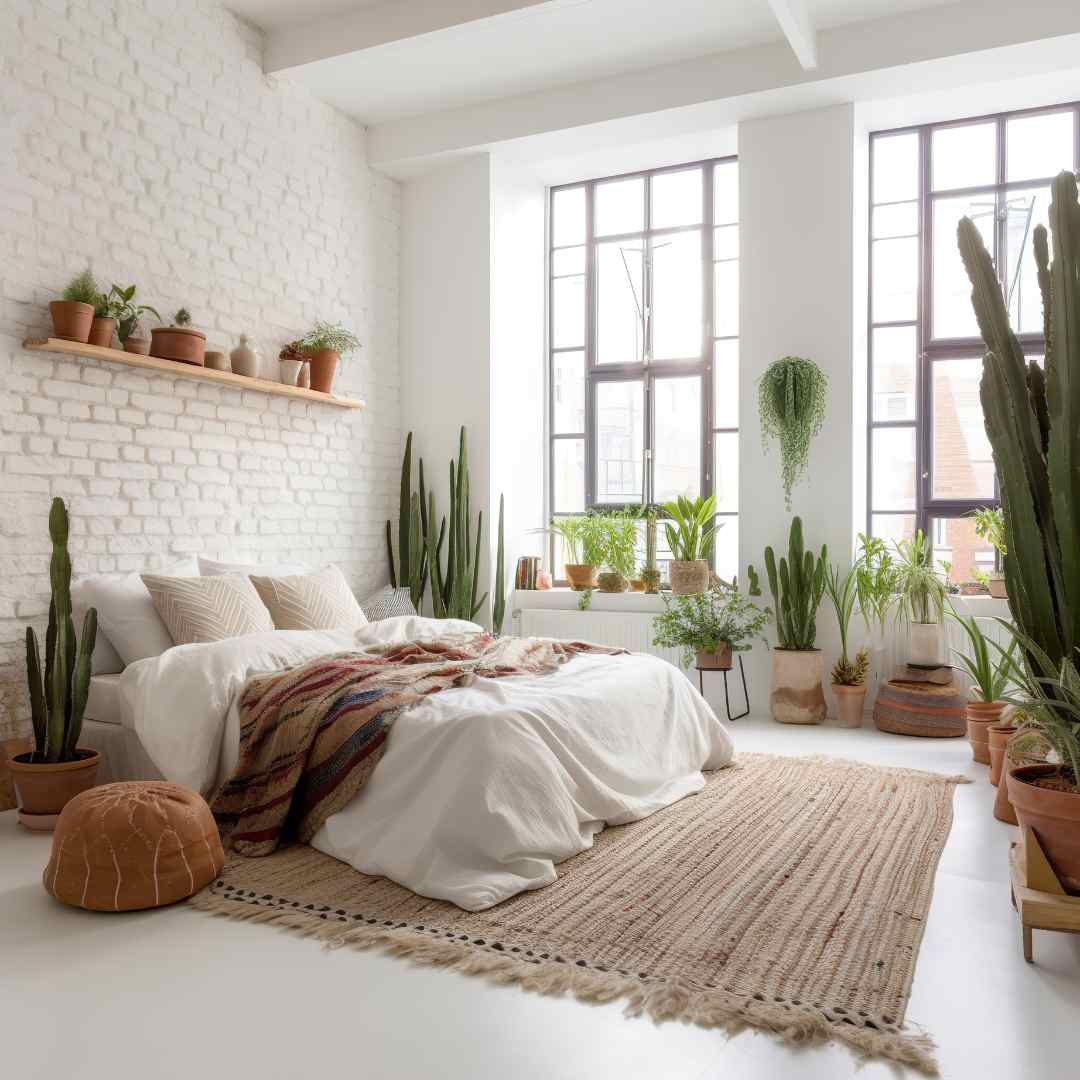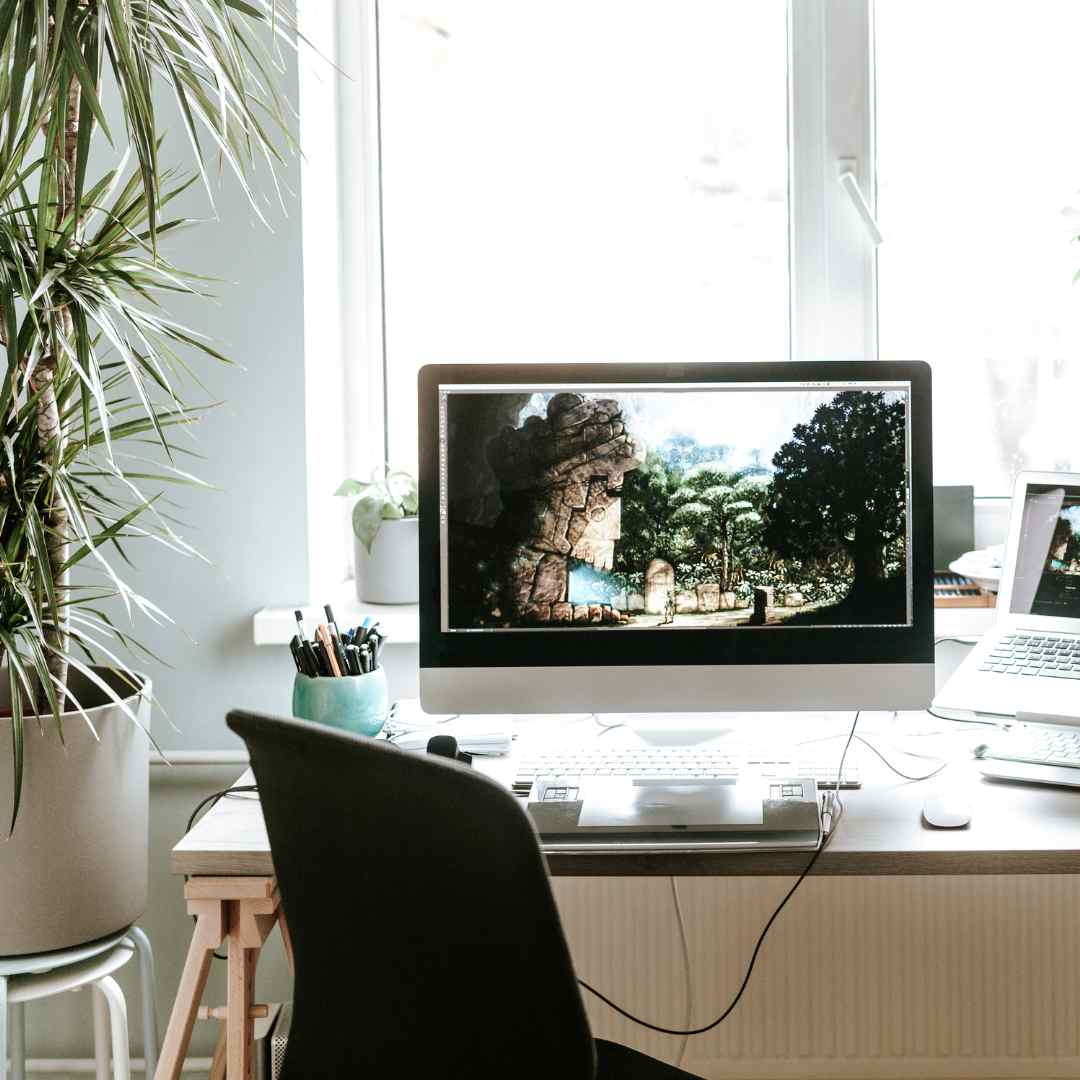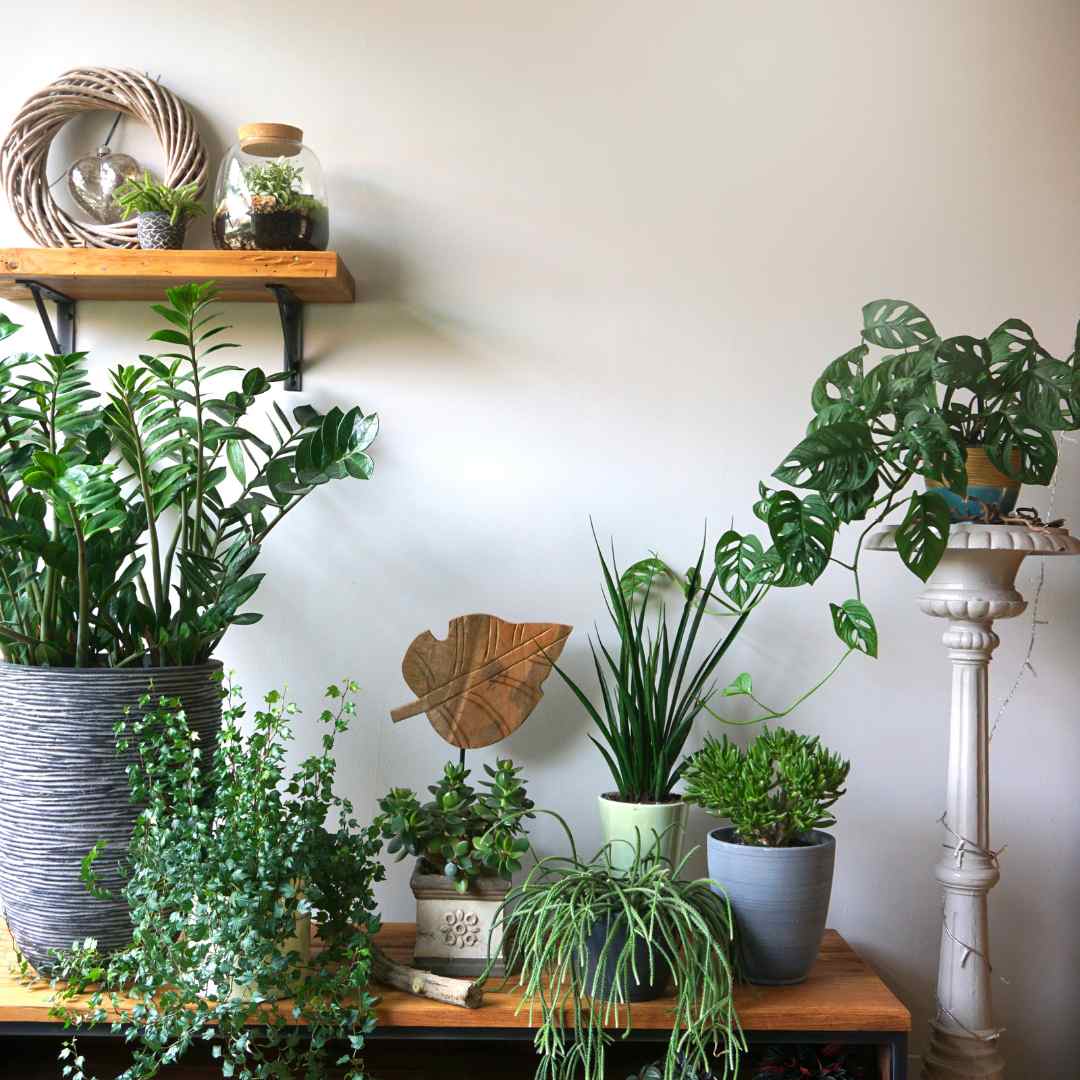Spathiphyllum wallisii, more commonly known as the peace lily, is a well-loved houseplant admired for its low maintenance and air-purifying qualities. Native to tropical rainforests of Central and South America, the peace lily has become a staple for both beginner and experienced plant owners. This guide will provide an in-depth look at how to care for the Spathiphyllum wallisii, discuss its benefits, and examine its unique characteristics.
Understanding Spathiphyllum Wallisii
Spathiphyllum wallisii is part of the Araceae family, which consists of monocotyledonous flowering plants. The plant is known for its glossy, deep green leaves that contrast beautifully with its white, spoon-shaped flowers. These flowers, which bloom throughout the year, consist of a white spathe surrounding a spadix. One reason for the popularity of Spathiphyllum wallisii is its ability to thrive in low-light environments, making it an ideal indoor plant for homes and offices.
Spathiphyllum Wallisii: Key Characteristics
The Spathiphyllum wallisii stands out for its striking features, including:
- Dark Green Leaves: Its leaves are broad, shiny, and maintain a vibrant green hue, even in moderate light.
- White Blooms: The plant produces long-lasting white flowers, which appear like a sail or flag, hence the name “peace lily.”
- Low Light Tolerance: Unlike many flowering plants, the Spathiphyllum wallisii can thrive in indirect light, making it perfect for indoor spaces with limited sunlight.
Benefits of Spathiphyllum Wallisii
The Spathiphyllum wallisii is more than just a decorative plant. It offers a range of benefits, including:
- Air Purification: According to NASA’s Clean Air Study, the peace lily is effective at removing toxins from the air. These include formaldehyde, benzene, and carbon monoxide, which are common indoor pollutants.
- Improved Humidity: The large leaves of Spathiphyllum wallisii release moisture, which can help increase humidity levels indoors, especially in air-conditioned environments.
- Aesthetic Appeal: With its striking white flowers and lush foliage, the Spathiphyllum wallisii adds a sense of tranquility and beauty to any room.
- Low Maintenance: This plant is ideal for individuals looking for a low-effort plant. Its resilience to varying light levels and moderate watering needs make it perfect for beginners.
-
 GuzmaniaAED65 – AED100
GuzmaniaAED65 – AED100 -
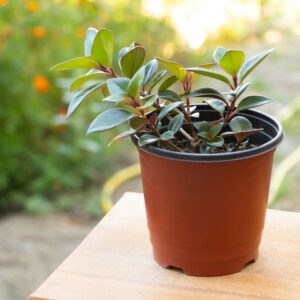 Lipstick PlantAED125
Lipstick PlantAED125 -
 Peace LilyAED40 – AED80
Peace LilyAED40 – AED80 -
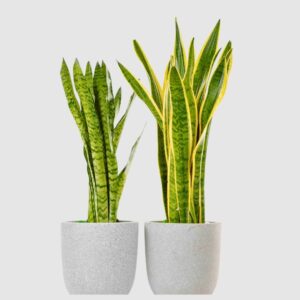 Snake PlantAED180
Snake PlantAED180 -
 Ficus LyrataAED220
Ficus LyrataAED220 -
 Dracaena WarneckiiAED398
Dracaena WarneckiiAED398 -
 Dracaena MassangeanaAED335
Dracaena MassangeanaAED335 -
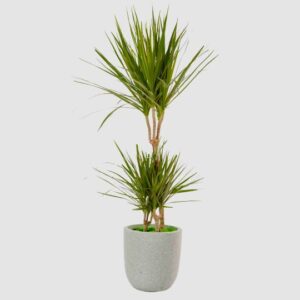 Dracaena MarginataAED325
Dracaena MarginataAED325 -
 Croton PetraAED300
Croton PetraAED300
Caring for Spathiphyllum Wallisii in the UAE
In the UAE’s hot climate, extra attention is needed to care for Spathiphyllum wallisii, especially in air-conditioned rooms. Here’s how to ensure it thrives:
Where to Place the Peace Lily Plant in an AC Room:
Position your Spathiphyllum wallisii away from direct air vents to avoid cold drafts. Opt for a spot with indirect light, such as near a shaded window.
Peace Lily Light Requirements:
Bright, indirect light is ideal. In the UAE, avoid placing the plant in direct sunlight as it can scorch the leaves.
Watering Frequency:
In the UAE’s dry conditions, water the plant once a week, ensuring the top inch of soil is dry before watering again. Use distilled or filtered water to avoid fluoride buildup.
Humidity Considerations:
AC rooms often reduce humidity levels, so mist the plant regularly or place it near a humidifier. Alternatively, you can group plants together to maintain moisture around the Spathiphyllum wallisii.
Spathiphyllum Wallisii General Care Tips
Caring for Spathiphyllum wallisii is relatively simple, as it is a hardy plant that can withstand different indoor environments. However, following specific care guidelines can ensure the plant stays healthy and blooms regularly.
Light Requirements for Spathiphyllum Wallisii
While the Spathiphyllum wallisii can tolerate low-light conditions, it prefers bright, indirect light to thrive. Direct sunlight can scorch the leaves, causing them to turn brown. If your plant is not flowering, it might not be getting enough light.
- Best Light Condition: Place your Spathiphyllum wallisii near a north-facing window or in a room with filtered sunlight.
Watering Schedule for Spathiphyllum Wallisii
The Spathiphyllum wallisii prefers consistently moist soil but should not be overwatered. Root rot can occur if the soil is waterlogged, so it’s important to let the top inch of soil dry out between waterings.
- Watering Tip: Water your peace lily once a week, and mist the leaves occasionally to mimic its natural humid environment. If the leaves droop, this is a sign the plant needs water, and it typically bounces back quickly after watering.
Temperature and Humidity Needs for Spathiphyllum Wallisii
As a tropical plant, Spathiphyllum wallisii thrives in warm, humid conditions. The ideal temperature range is between 18°C to 26°C (65°F to 80°F). Sudden temperature changes or drafts can stress the plant, so keep it away from windows or doors where cold drafts may occur.
- Humidity Tip: Increase humidity around your Spathiphyllum wallisii by placing a tray of water near the plant or using a humidifier, especially in dry climates or during winter months when indoor heating can dry out the air.
Soil and Fertilizer for Spathiphyllum Wallisii
The right soil mix is essential for the healthy growth of Spathiphyllum wallisii. A well-draining potting mix with organic matter is ideal, and avoid soils that retain too much moisture. Fertilizing during the growing season (spring and summer) can encourage more blooms.
- Fertilizing Schedule: Use a balanced liquid fertilizer once a month during the growing season, but reduce feeding during the fall and winter when the plant’s growth slows down.
Common Issues with Spathiphyllum Wallisii
Even though Spathiphyllum wallisii is a resilient plant, it can face certain problems. Understanding these issues and addressing them promptly can help maintain the plant’s health.
Brown Leaf Tips on Spathiphyllum Wallisii
Brown tips are often caused by underwatering or exposure to chemicals like fluoride in tap water. To avoid this, use filtered or distilled water for your peace lily and ensure it’s receiving the right amount of water.
- Solution: Trim the brown tips with sterilized scissors and adjust the watering schedule to prevent further browning.
Yellow Leaves on Spathiphyllum Wallisii
Yellowing leaves can be a sign of overwatering or nutrient deficiency. If the soil is consistently wet, root rot may occur, leading to yellow leaves. On the other hand, if the plant isn’t getting enough nutrients, fertilize it to restore its health.
- Solution: Allow the soil to dry out between waterings and feed the plant with a balanced fertilizer during the growing season.
Wilting or Drooping Spathiphyllum Wallisii
If your Spathiphyllum wallisii is wilting or drooping, it is likely thirsty. Peace lilies are known to perk up quickly after watering, but persistent wilting may indicate root rot or a need for repotting.
- Solution: Water the plant immediately if the soil is dry, but check the roots if wilting persists to ensure there is no root damage.
Repotting Spathiphyllum Wallisii
Repotting your Spathiphyllum wallisii every 1-2 years is essential to encourage growth and prevent the plant from becoming root-bound. When the roots outgrow the pot, the plant’s growth will slow, and it may not flower as frequently.
- How to Repot: Choose a pot that is 1-2 inches larger than the current one, and use a fresh, well-draining potting mix. Gently remove the plant from its current pot, shake off excess soil, and replant it in the new pot. Water the plant thoroughly after repotting to help it settle.
Propagation of Spathiphyllum Wallisii
Propagating the Spathiphyllum wallisii is a simple process that can be done through division. This not only helps control the size of the plant but also allows you to grow new peace lilies from the parent plant.
- Steps for Propagation:
- Remove the plant from its pot and gently separate the root ball into smaller sections, ensuring each division has both roots and leaves.
- Plant each division in its own pot with fresh soil, and water them well.
- Keep the new plants in a warm, humid environment, and they will establish roots in a few weeks.
Spathiphyllum Wallisii Varieties
While Spathiphyllum wallisii is the most common peace lily variety, several other species and hybrids are available, each offering unique characteristics. Some notable varieties include:
- Spathiphyllum ‘Sensation’: Known for its large, deeply veined leaves, this variety is ideal for larger indoor spaces.
- Spathiphyllum ‘Domino’: This variety has variegated leaves, with white streaks running through the green foliage.
- Spathiphyllum ‘Mauna Loa’: A dwarf variety, perfect for small spaces, with dark green leaves and white flowers.
Each of these varieties shares the resilience and beauty of the Spathiphyllum wallisii, but may offer different aesthetic appeals for plant enthusiasts.
The Therapeutic and Medicinal Benefits of Spathiphyllum Wallisii
The Spathiphyllum wallisii isn’t just an attractive plant—it also offers potential therapeutic benefits. In traditional medicine, extracts from the plant’s roots and leaves have been used to treat minor skin irritations and wounds. Recent studies have explored the plant’s antimicrobial and anti-inflammatory properties, with early results showing promise.
- Potential Health Benefits: The plant contains phytochemicals like alkaloids, flavonoids, and phenolic compounds, which may contribute to its healing properties. While these studies are still in early stages, the potential applications of peace lilies in natural remedies and air purification are becoming increasingly recognized.
Toxicity of Spathiphyllum Wallisii
Despite its many benefits, the Spathiphyllum wallisii can be toxic to pets and humans if ingested. The plant contains **calcium oxalatecompounds, which can cause irritation and swelling of the mouth if ingested. Symptoms may include nausea, difficulty swallowing, and drooling in pets. It is essential to keep the plant out of reach of cats, dogs, and young children to avoid accidental ingestion.
The Spathiphyllum wallisii is a versatile and resilient houseplant that offers more than just aesthetic appeal. Its ability to purify air, increase humidity, and thrive in low-light conditions makes it an ideal choice for indoor spaces. With proper care, this plant will reward you with beautiful blooms and lush foliage year-round, while also contributing to a healthier indoor environment.
By understanding the needs of the Spathiphyllum wallisii, you can ensure it remains a healthy, thriving addition to your home. Whether you’re a seasoned plant enthusiast or a beginner, the peace lily is a perfect plant that offers both beauty and function. Its unique characteristics, low-maintenance care, and numerous health benefits make it a top choice for any indoor garden.
Frequently Asked Questions About Spathiphyllum Wallisii in the UAE
1. What is Spathiphyllum Wallisii, and why is it popular in the UAE?
Spathiphyllum Wallisii, commonly known as the peace lily, is a low-maintenance plant that thrives in indirect light and has beautiful, glossy green leaves with white flowers. It is popular in the UAE due to its resilience in indoor environments and its ability to improve air quality. As homes and offices in the UAE typically have air conditioning, Spathiphyllum Wallisii can easily adapt to low-light and controlled indoor conditions, making it a perfect indoor plant for UAE residents.
2. How do I care for Spathiphyllum Wallisii in the UAE climate?
In the UAE, Spathiphyllum Wallisii requires careful attention due to the hot outdoor climate and the frequent use of air conditioning indoors. Here are some essential tips:
- Light Requirements: Place the plant in a room with bright, indirect light. Avoid direct sunlight as it can scorch the leaves, which is common in the UAE due to strong sunlight.
- Watering: Water the plant once a week or when the top inch of the soil feels dry. In air-conditioned rooms, where the air is dry, mist the leaves occasionally to maintain humidity.
- Humidity: The UAE’s arid environment can be a challenge, so increase the humidity around your plant by placing it near a humidifier or grouping it with other plants.
3. Can Spathiphyllum Wallisii survive in an air-conditioned room in the UAE?
Yes, Spathiphyllum Wallisii can thrive in air-conditioned rooms as long as you take some precautions. The key is to avoid placing it directly in front of an air vent, as the cold draft can cause the leaves to dry out. Air-conditioned rooms often have low humidity, which can be mitigated by regular misting or using a humidifier. It’s essential to ensure the plant has adequate indirect light, which is readily available in many UAE homes and offices.
4. How often should I water Spathiphyllum Wallisii in the UAE?
Watering frequency for Spathiphyllum Wallisii in the UAE depends on the indoor conditions. Typically, you should water the plant once a week, but always check the soil first. If the top inch of the soil is dry, it’s time to water. In air-conditioned rooms, which can dry out the plant, you may need to mist the leaves to provide additional moisture and keep the plant hydrated.
5. What are the best locations to place Spathiphyllum Wallisii indoors in the UAE?
When deciding where to place your Spathiphyllum Wallisii indoors, consider the following:
- Near windows with indirect sunlight: Bright but indirect sunlight is perfect for peace lilies. You can place the plant near a north-facing window or any area where the light is filtered.
- Away from direct sun and air conditioning vents: Avoid placing the plant near direct sunlight or in front of air conditioning vents, as both can harm the leaves. The strong UAE sun can burn the leaves, while cold air from the AC can dry them out.
6. What should I do if the leaves of my Spathiphyllum Wallisii turn yellow or brown in the UAE?
Yellow or brown leaves on your Spathiphyllum Wallisii are typically a sign of overwatering, underwatering, or exposure to direct sunlight. In the UAE’s bright and arid climate, direct sunlight can cause the leaves to scorch, resulting in browning. Alternatively, yellowing leaves could indicate that the plant is being overwatered. Make sure the soil is slightly moist but not soggy, and adjust the plant’s placement to ensure it’s not in direct sunlight.
7. Can I keep Spathiphyllum Wallisii outdoors in the UAE?
Although Spathiphyllum Wallisii is primarily an indoor plant, it can be placed outdoors in shaded, humid areas. However, given the extreme heat in the UAE, especially during the summer, it is not recommended to keep the plant outdoors for long periods. The dry, hot climate can cause the plant to dry out and wilt. If you choose to place it outside, ensure it is in a well-shaded area, protected from direct sunlight, and mist it regularly to maintain moisture.
8. How does Spathiphyllum Wallisii benefit UAE households?
The Spathiphyllum Wallisii offers numerous benefits for UAE households:
- Air Purification: As a known air purifier, Spathiphyllum Wallisii removes common indoor pollutants like formaldehyde, benzene, and carbon monoxide, improving air quality in UAE homes, where AC is constantly used.
- Aesthetic Appeal: With its elegant white blooms and lush green leaves, it adds a serene touch to indoor spaces, making it a popular choice for homes and offices in the UAE.
- Low Maintenance: It is well-suited for the busy lifestyles common in UAE cities, as it requires minimal care compared to other houseplants.
9. What type of soil should I use for Spathiphyllum Wallisii in the UAE?
Spathiphyllum Wallisii thrives in well-draining, organic-rich soil. In the UAE, where humidity is often low, it is crucial to use soil that retains moisture without becoming waterlogged. A peat-based potting mix or soil mixed with perlite is ideal for retaining the right balance of moisture and drainage. Be sure to check that the soil doesn’t stay soggy for extended periods, as this can lead to root rot.
10. What common problems might Spathiphyllum Wallisii face in the UAE, and how can I solve them?
In the UAE, Spathiphyllum Wallisii may encounter the following problems:
- Dry air due to air conditioning: Low humidity can cause the leaves to dry out. Regular misting or using a humidifier will help maintain adequate moisture levels.
- Leaf burn from direct sunlight: Exposure to the UAE’s intense sun can scorch the plant’s leaves. Place it in indirect light to prevent leaf burn.
- Root rot from overwatering: The plant’s roots can rot if the soil is waterlogged. Ensure the pot has drainage holes, and let the soil dry between waterings.
11. Is Spathiphyllum Wallisii pet-friendly for UAE residents?
No, Spathiphyllum Wallisii is not pet-friendly. It contains calcium oxalate crystals, which can be toxic to cats, dogs, and other pets if ingested. Symptoms may include drooling, vomiting, and irritation in the mouth. Pet owners in the UAE should place the plant in areas inaccessible to pets, such as on high shelves or in plant hangers.
12. How can I propagate Spathiphyllum Wallisii in the UAE?
Propagation of Spathiphyllum Wallisii can be easily done through division. Here’s how you can propagate it in the UAE:
- Remove the plant from its pot and gently separate the root ball into smaller clumps, each with its own roots and leaves.
- Repot each division in its own container with fresh, well-draining soil.
- Water thoroughly and place the new plants in a humid environment with indirect light.
Ensure that the newly propagated plants are kept away from direct sunlight and air-conditioned drafts.
13. How often should I fertilize Spathiphyllum Wallisii in the UAE?
Fertilize your Spathiphyllum Wallisii once a month during the growing season, which is typically from spring to summer. Use a balanced liquid fertilizer that provides essential nutrients for flowering. In the UAE’s hot climate, reduce fertilization during the fall and winter months, when the plant’s growth slows down.


